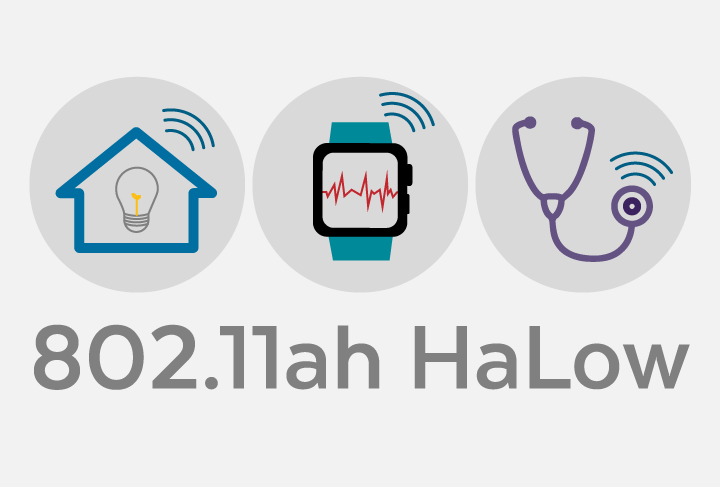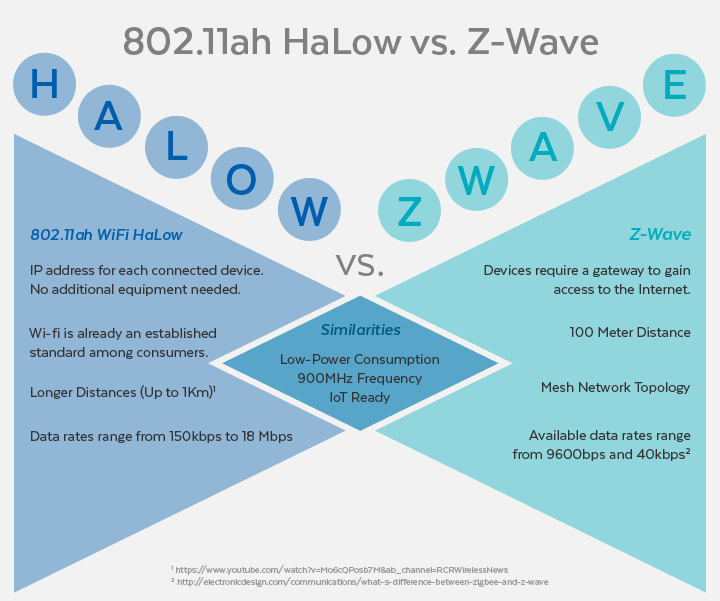It’s rarely the case that a new Wi-Fi standard introduces slower speeds, but the Wi-Fi Alliance is working on 802.11ah, a new standard in the works that promises to do just that. The new standard aims to optimize the widely recognized Wi-Fi standard for IoT devices and give Internet connectivity to low-powered sensors. This new standard can yield between 10-20Mbps using the unlicensed 900Mhz spectrum range. The lower frequency range allows Wi-Fi to better penetrate common household and infrastructure barriers such as walls and ceilings. The new standard boasts twice the amount of coverage distances than previous 802.11 standards. 802.11ah is predicted to be able to reach up to 1km distances. But why does the new standard support slower speeds?
Slower speeds consume less power, making it an ideal compromise to satisfy the low-powered requirements of the sensors and chipsets that will be embedded in home automation devices and other Internet of Things (IoT) smart gadgets.
Occupying the 900 Mhz Frequency Band
We’ve mentioned previously the different caveats that come with using Wi-Fi as standard for smart home automation. At the 2.4Ghz and 5Ghz bands utilized by current 802.11 standard, the spectrum is too crowded with other devices and make smart home devices susceptible to interference. And even though the higher frequency bands support faster download speeds, they consume a lot of battery power making it inconvenient for small devices such as small sensors to hold their battery power. According to NetworkComputing, “HaLow is still subject to interference, and 900 MHz has its share of other devices already using the frequency. Cordless phones, hobby and licensed radio systems, lighting controls, and AV equipment are just some of the other devices that call 900 Mhz home”.
Why Do We Need Another Home Automation Standard?
Both Z-Wave and Class 1 Bluetooth can achieve up to 100 meters. But these distances are based in open fields where devices are located within the line of sight of each other without any infrastructure barriers. 802.11ah, also known as HaLow, will operate in the same frequency that other protocols such as Z-wave and Zigbee operate in. But why adopt a new standard when there are other solutions such as Bluetooth or even Z-wave, a home automation protocol that has already established itself for over a decade with the Z-Wave Alliance?
Wi-Fi HaLow Might Be More IoT-Friendly than Z-Wave
The Wi-Fi Alliance has two main motivations to create an IoT-friendly standard. One, Wi-fi is a technology that most consumers are already familiar with, and in that regard, already has a head start in comparison to other protocols such as Z-wave. Z-Wave is a protocol that has had to invest in educating customers about the standard. Another important facet to Wi-Fi HaLow is that the low-powered standard will have the ability to give IoT devices and sensors their own IP addresses. This is an attribute that even the Z-Wave protocol does not support. With Z-Wave, devices are connected using a mesh network and rely on a Z-Wave gateway to access the internet. Wi-Fi HaLow promises to function without additional hardware other than an 802.11ah compatible router.
But one of the major downsides of the new standard is its low-speed transmission rates. According to The Verge, manufacturers should technically have the option of customizing their devices to achieve faster transfers, at the cost of sacrificing battery life.
There are a myriad of home automation protocols. Other protocols currently include Z-Wave, Zigbee, Wi-Fi, and Bluetooth. Click here to learn more about Z-Wave Plus, the latest Z-Wave standard.



